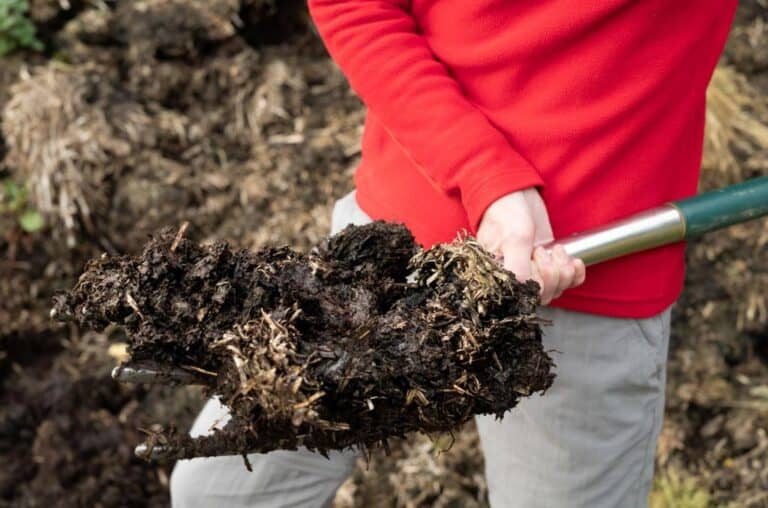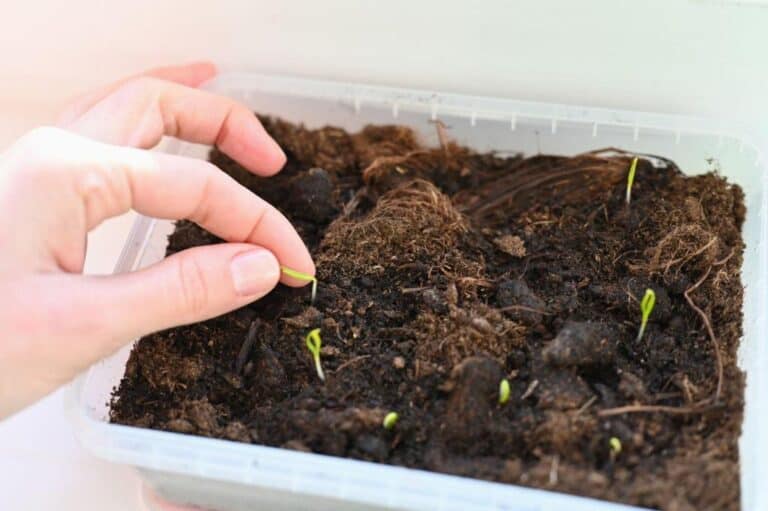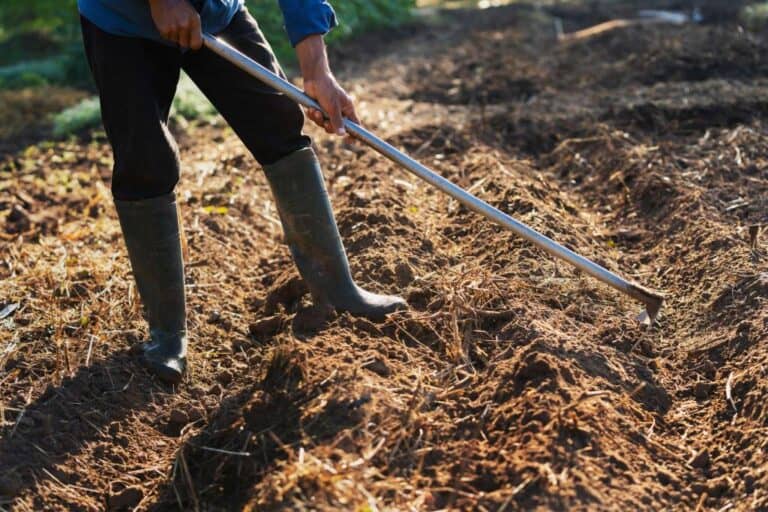Clearing and Grubbing Definition: Understanding Basic Site Preparation

Before any construction or development project can begin, the land must be cleared and prepared for the work ahead. This process is known as clearing and grubbing, and it involves removing all vegetation, trees, roots, stumps, and other debris from a site to create a level and stable surface.
While it may seem like a straightforward process, clearing and grubbing is a critical step that requires careful planning, execution, and attention to detail. In this article, we will explore the definition of clearing and grubbing, the methodology behind the process, and the specifications required to prepare a site for construction or development projects.
Whether you are a contractor, developer, or simply someone interested in learning about site preparation, this article will provide you with valuable insights into this essential step in the construction process. So let’s get started and dive into the world of clearing and grubbing!
Clearing and Grubbing Definition
Clearing and grubbing is the process of removing all vegetation, trees, roots, stumps, and other debris from a site to prepare it for construction or other development projects. This process is essential for creating a level and stable surface that can support the weight of new buildings, roads, or other infrastructure.
Clearing: Clearing refers to the removal of all vegetation from a site. This includes trees, shrubs, and any other plants that may be present. Clearing is usually done with heavy machinery or combined with labor tasks.
Grubbing: Grubbing is the process of removing the roots and other underground debris that remain after clearing. This includes stumps, roots, buried logs, and other debris. Grubbing is also done with heavy machinery such as root rakes or stump grinders.
Clearing and grubbing in construction process is often one of the first steps, and it’s crucial to get it right. Poor clearing and grubbing practices can result in unstable building sites, erosion, and other environmental issues.
Clearing and Grubbing Methodology
The methodology for clearing and grubbing varies depending on the site and the specific requirements of the project. However, there are a few general steps that are typically involved:
- Site Evaluation: Before beginning any work, the site must be evaluated to determine the type and extent of vegetation, trees, and other debris that need to be removed. This evaluation helps the project team determine the most efficient and cost-effective approach to clearing and grubbing.
- Marking and Flagging: Once the site has been evaluated, the project team will mark and flag the areas that need to be cleared. This helps ensure that the work is done according to the project specifications and avoids unnecessary damage to areas that don’t need to be cleared.
- Tree Removal: The first step in the clearing and grubbing process is typically to remove any trees from the site. This may involve cutting down the trees and removing the stumps, or it may involve uprooting the trees entirely.
- Vegetation Removal: After the trees have been removed, the next step is to clear all the remaining vegetation from the site. This may involve using heavy equipment, such as bulldozers or excavators, to remove the vegetation and roots.
- Debris Removal: Once all the vegetation has been removed, the debris from the site must be cleared. This includes rocks, stumps, and other materials that may have been left behind during the clearing process.
- Site Grading: The final step in the clearing and grubbing process is to grade the site. This involves leveling the ground to ensure a stable base for construction.
What Equipment Is Used for Clearing and Grubbing?
To accomplish clearing and grubbing tasks efficiently and effectively, various types of equipment are employed, each with its own unique capabilities and functions.
Here is a list of equipment commonly used for clearing and grubbing:
- Bulldozer: A powerful machine with a large metal blade attached to the front, capable of pushing aside vegetation, rocks, and debris to create a clear path for development.
- Excavator: A versatile machine equipped with a hydraulically powered arm and a bucket attachment, used for uprooting trees, removing roots, and excavating soil.
- Mulcher/Brush Cutter: Equipment designed for selective vegetation removal, delicately shredding trees, brush, and overgrown plants into mulch while minimizing site disturbance.
- Chainsaw: Essential for felling large trees, enabling efficient and controlled removal during the clearing process.
- Wood Chipper: Used to transform tree trunks, branches, and other wood debris into manageable wood chips or mulch, facilitating their removal from the site.
- Skid Steer Loader: A compact and versatile machine capable of various tasks, such as hauling debris, removing smaller vegetation, and leveling the ground.
- Personal Protective Equipment (PPE): Crucial for worker safety, including hard hats, safety glasses, gloves, and sturdy boots to protect against falling debris and other hazards.
By employing these equipment options strategically, construction professionals can successfully clear and grub land, creating a clean and workable site for future development projects.
Clearing and Grubbing Specifications

Clearing and grubbing are governed by a variety of specifications, regulations, and guidelines. These include federal, state, and local regulations that are designed to protect the environment and ensure that the land is cleared safely and efficiently.
Some of the key specifications that govern clearing and grubbing include:
- Environmental Regulations: Clearing and grubbing must be done in accordance with all relevant environmental regulations. These regulations are designed to protect wildlife habitats, wetlands, and other sensitive areas.
- Safety Guidelines: Clearing and grubbing can be a dangerous process, so it’s essential to follow all relevant safety guidelines. This includes using the proper equipment and ensuring that all workers are properly trained.
- Site Specifics: The specific requirements for clearing and grubbing can vary depending on the site and the project. This may include requirements for soil erosion control, the preservation of historic sites, or other factors that must be taken into account during the clearing process.
- Waste Management: Clearing and grubbing can generate a significant amount of waste, including wood chips, stumps, and other debris. Proper waste management is essential to ensure that the waste is disposed of safely and in accordance with all relevant regulations.
- Permitting: Depending on the site and the project, clearing and grubbing may require various permits and approvals from local, state, or federal authorities. It’s important to ensure that all necessary permits are obtained before beginning any work.
Clearing and grubbing specifications may also include requirements for the use of specific equipment or techniques, such as low-impact clearing methods to minimize the environmental impact of the clearing process.
How Much is the Cost of Clearing and Grubbing?
Clearing and grubbing costs can vary depending on a variety of factors, including the size and location of the site, the level of vegetation and debris on the site, and the specific requirements of the project.
According to various sources, the cost can range from $0.66 to $1.11 per square foot, from $1,500 to $3,000 per acre on lightly wooded lots and from $3,800 to $6,500 per acre on heavily wooded lots, and from $1.30 to $2 per square foot or from $250 to $1,000 per acre. The cost can also depend on the equipment used, such as a skid steer mulcher, which costs around $2,500 per day.
One of the primary factors that can impact the cost of clearing and grubbing is the size of the site. Larger sites typically require more equipment, labor, and time to clear and grub, which can increase the overall cost of the process.
Additionally, the location of the site can also impact the cost of clearing and grubbing, as sites that are more difficult to access or require special permits may require additional expenses.
Another factor that can impact the cost of clearing and grubbing is the level of vegetation and debris on the site. Sites that have more extensive vegetation or larger trees may require specialized equipment or techniques to remove them, which can increase the overall cost of the process.
Additionally, sites that have significant amounts of debris, such as rocks or other obstacles, may require additional heavy equipment to clear land and remove rocks.
It’s important to work with experienced professionals to estimate the cost of clearing and grubbing for your specific project. Professionals with expertise in clearing and grubbing can help you evaluate the specific requirements of your project and estimate the overall cost of the process. This can help you plan for these expenses and ensure that your project is completed within your budget.
How Is Clearing and Grubbing Different From Excavation?
Clearing and grubbing, as mentioned earlier, primarily focus on the removal of vegetation, underbrush, debris, and obstacles from the site. It is the initial step in the transformation of a natural landscape into a cleared and workable area.
Clearing and grubbing involve the systematic and strategic removal of these elements, creating an open space ready for further development. It is akin to the act of sweeping away the layers of nature’s tapestry, revealing the raw potential of the site.
Excavation, on the other hand, goes beyond the surface. It involves the careful and precise digging, shaping, and leveling of the ground to create desired contours, depths, and slopes. It is like sculpting the earth itself, molding it to accommodate the needs of the planned construction.
Excavation may be required for various purposes, such as creating building foundations, constructing utility trenches, or preparing space for underground infrastructure. Heavy machinery, such as excavators and backhoes, is utilized to remove soil, rock, and other materials, reshaping the terrain according to the project’s specifications.
Conclusion
Clearing and grubbing are critical steps in the land development and construction processes. This process involves the removal of all vegetation, trees, and debris from a site to prepare it for construction or other development projects. The methodology for clearing and grubbing can vary depending on the site and the project, but it typically involves site evaluation, marking and flagging, tree removal, vegetation removal, debris removal, and site grading.
Clearing and grubbing are governed by a variety of specifications, regulations, and guidelines, including environmental regulations, safety guidelines, site-specific requirements, waste management requirements, and permitting requirements. It’s essential to follow these specifications to ensure that the clearing and grubbing process is done safely, efficiently, and in accordance with all relevant regulations.
If you’re planning a land development or construction project, it’s crucial to work with experienced professionals who understand the clearing and grubbing process and can help ensure that your project is done right. With the right team and the right approach, you can clear your site safely and efficiently, creating a stable base for your construction project and minimizing the environmental impact of the clearing process.
How long does the clearing and grubbing process typically take?
The duration of the process depends on various factors, including the size of the site, the amount of vegetation, and the complexity of the terrain. Larger projects may require more time compared to smaller ones.
Is clearing and grubbing only done for large-scale construction projects?
No, clearing and grubbing can be performed for projects of various sizes, ranging from small residential developments to large-scale infrastructure projects.
Can any vegetation or trees be preserved during the clearing and grubbing process?
Depending on the project requirements, efforts can be made to preserve specific vegetation or trees that have significant ecological or aesthetic value. This may involve careful planning and coordination with environmental experts.
Is it possible to repurpose the cleared vegetation and debris?
Yes, cleared vegetation and debris can often be repurposed through recycling, chipping, or composting, depending on local regulations and project needs.







